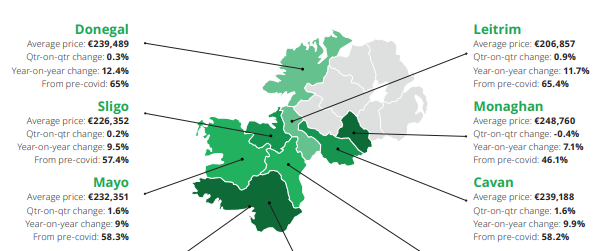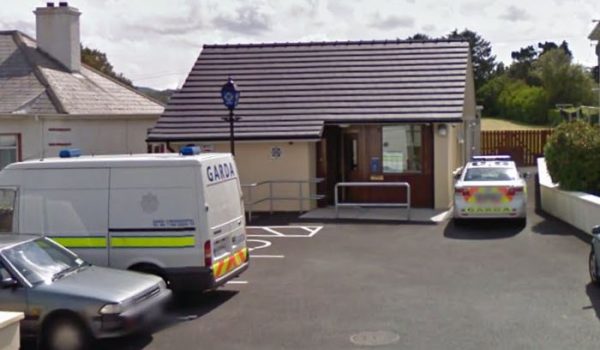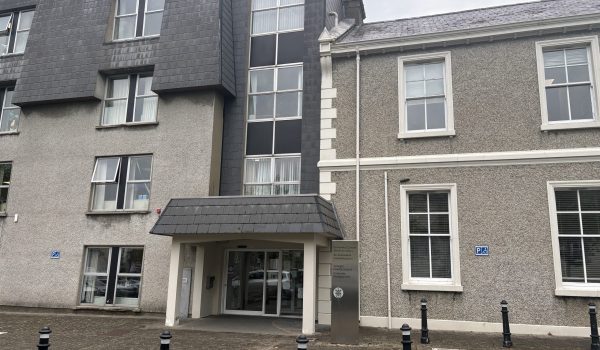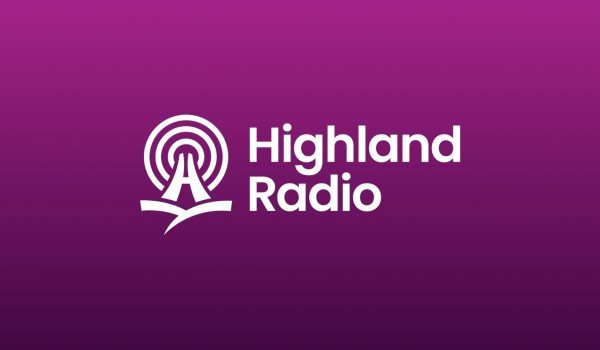
The latest rental survey conducted by daft.ie shows that house prices in Donegal rose 3% in the third quarter of this year.
Prices in Q3 of 2024 were 12% higher than a year previously, compared to a rise of 8% seen a year ago.
The average price of a home is now €239,000, 65% above the level seen at the start of the Covid-19 pandemic.
Nationally, housing prices rose by an average of 3.1% in the third quarter of 2024.
Full report:
In Donegal, prices in the third quarter of 2024 were 12% higher than a year previously, compared to a rise of 8% seen a year ago. The average price of a home is now €239,000, 65% above the level seen at the start of the covid19 pandemic.
Housing prices nationally rose by an average of 3.1% in the third quarter of 2024, according to the latest Daft.ie House Price Report released today by Ireland’s largest property website, Daft.ie. The typical listed price nationwide in the third quarter of 2024 was €344,848, 6.2% higher than in the same period a year earlier and 37% higher than at the onset of the covid19 pandemic.
The increase in prices in the third quarter was broadly based but the percentage gains were greatest in Dublin, where prices rose by 4.1% between June and September. This is the largest three-month increase in the capital since early 2017 and means that prices there are on average more than 6% higher than year ago. This means that annual inflation in Dublin is higher than the average of the other four cities for the first time since 2020: in Cork, Galway and Waterford cities, prices in the third quarter were roughly 4% higher than a year ago. Inflation in Limerick city remains higher, however, at 9.7%, while the average increase outside the cities in the year to Q3 was 6.3%.
The number of second-hand homes available to buy nationwide on September 1st stood at less than 11,900, down 12% year-on-year, the fifteenth month of contracting supply. This is a new low for this time of year, surpassing the previous low of 12,900 homes on September 1st 2021, just after lockdowns ended. The fall in availability largely reflects a dip in the number of second-hand homes coming on to the market over the last year, with just over 51,000 homes coming on to the market in the twelve months to September, compared to almost 57,000 a year ago.
Commenting on the report, its author Ronan Lyons, economist at Trinity College Dublin, said:
“While the volume of new homes being built and bought has largely held up in recent quarters, despite rising interest rates, the same cannot be said of the second-hand market. The number of homes coming on to the second-hand market remains very weak. The resulting scarcity of homes has pushed prices up, especially in Dublin, where new homes are being built. The typical second-hand home bought in Dublin between June and September sold for 7.6% above its listed price, the biggest gap since records began in 2010. Conditions elsewhere are similar, with a record average premium of 5.4% above the listed price nationally.
The slow decline in mortgage interest rates will help the market, as will sitting homeowners coming off fixed-rate mortgages. But these factors are largely outside of policymaker control. The underlying issue remains a lack of homes, of all kinds, and this should remain the focus for policymakers before and after the next election.”





